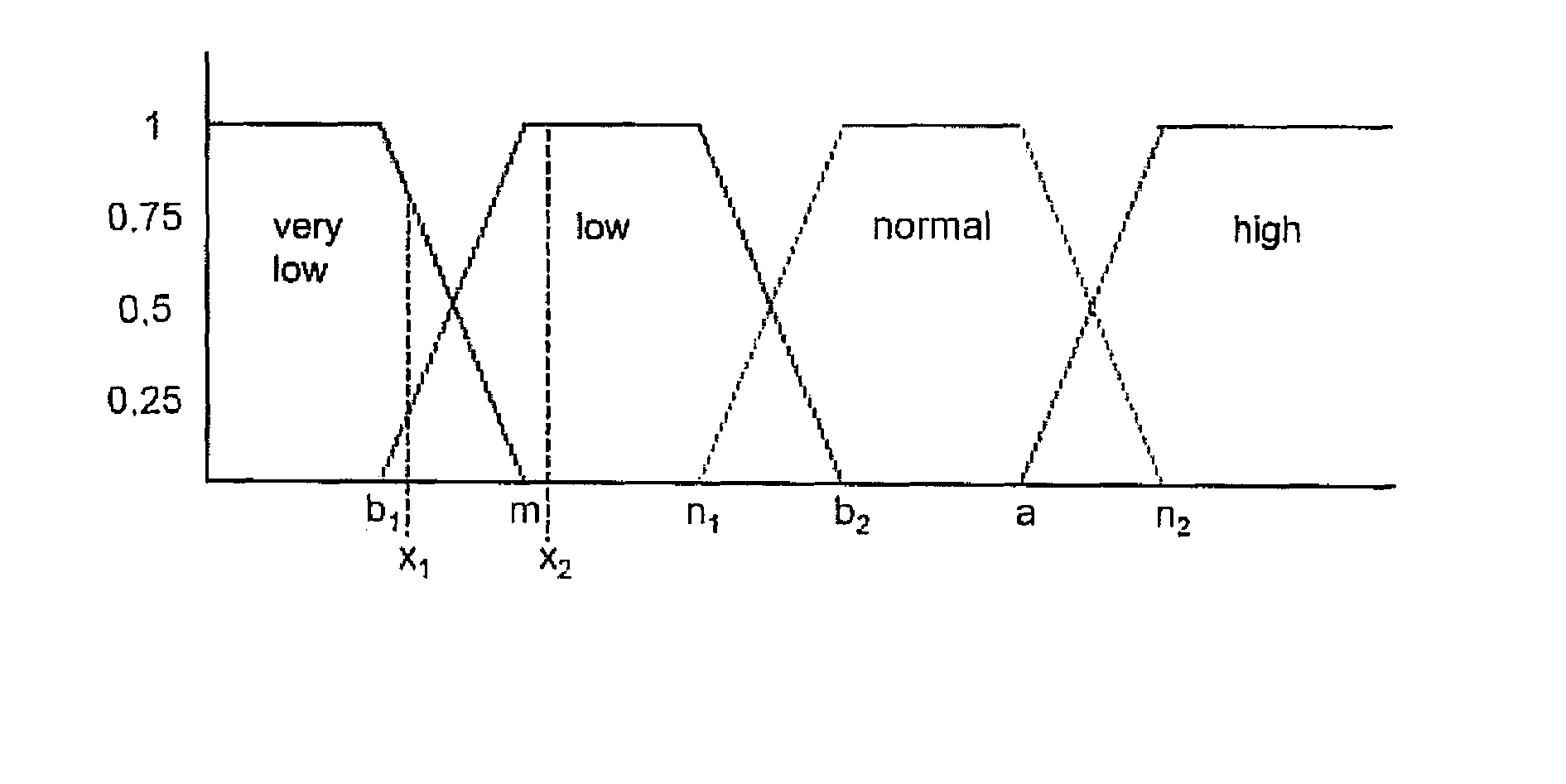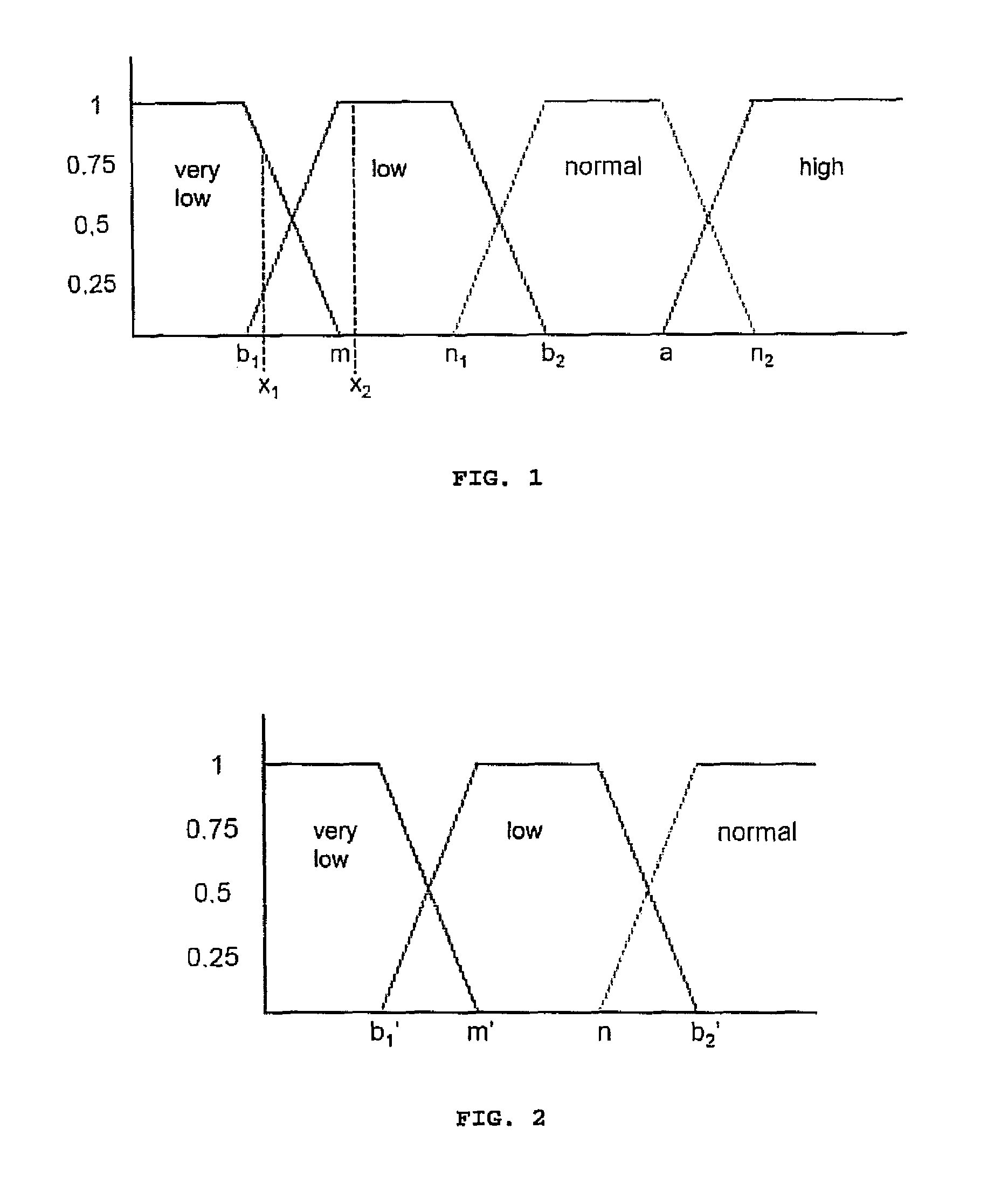Method and system for determining an individual's state of attention
a technology of attention state and individual, applied in the field of method and system for determining the attention state of individuals, can solve the problems of increasing the reaction time and hypersensitivity to distraction, reducing the subject's attention level, and reducing the risk of themselves or others
- Summary
- Abstract
- Description
- Claims
- Application Information
AI Technical Summary
Benefits of technology
Problems solved by technology
Method used
Image
Examples
first embodiment
[0061]In the first embodiment, once the respiratory signal is obtained, it is segmented using, for example, a relevant peak algorithm such as the watershed algorithm, based on symbolic seeds, in order to simplify the respiratory signal and reduce the number of data which define it. A peak is considered to be relevant, and the seed thereof is validated, when it meets a set of requirements, such as: width, height and area greater than certain minimum values. In this way, the amount of information to be processed can be reduced by two orders of magnitude, from 2,000,000 data to 12,000 data. Once the respiratory signal is segmented, a representation thereof is obtained where each of the respiratory cycles can be independently observed.
[0062]In a first step of the method, the subject's normal respiratory characteristics are learnt and, in a second step, the respiratory signal is analysed in order to recognise pre-defined respiratory patterns and identify the subject's state.
[0063]In an e...
second embodiment
[0139]FIG. 11 shows an example of a result of the method for determining a state of attention according to the Said graph represents index dKsnorm against time and a first state of attention, classified as “state 0” and corresponding to a normal state, a state of wakefulness, may be observed, followed by a transition, approximately at minute 53, to a second state of attention, classified as “state 1” and pertaining to a state of fatigue and / or drowsiness. For this specific example, a threshold value of 6 was used, although it is understood that index dKsnorm may have another value for other embodiments.
PUM
 Login to View More
Login to View More Abstract
Description
Claims
Application Information
 Login to View More
Login to View More - R&D
- Intellectual Property
- Life Sciences
- Materials
- Tech Scout
- Unparalleled Data Quality
- Higher Quality Content
- 60% Fewer Hallucinations
Browse by: Latest US Patents, China's latest patents, Technical Efficacy Thesaurus, Application Domain, Technology Topic, Popular Technical Reports.
© 2025 PatSnap. All rights reserved.Legal|Privacy policy|Modern Slavery Act Transparency Statement|Sitemap|About US| Contact US: help@patsnap.com



